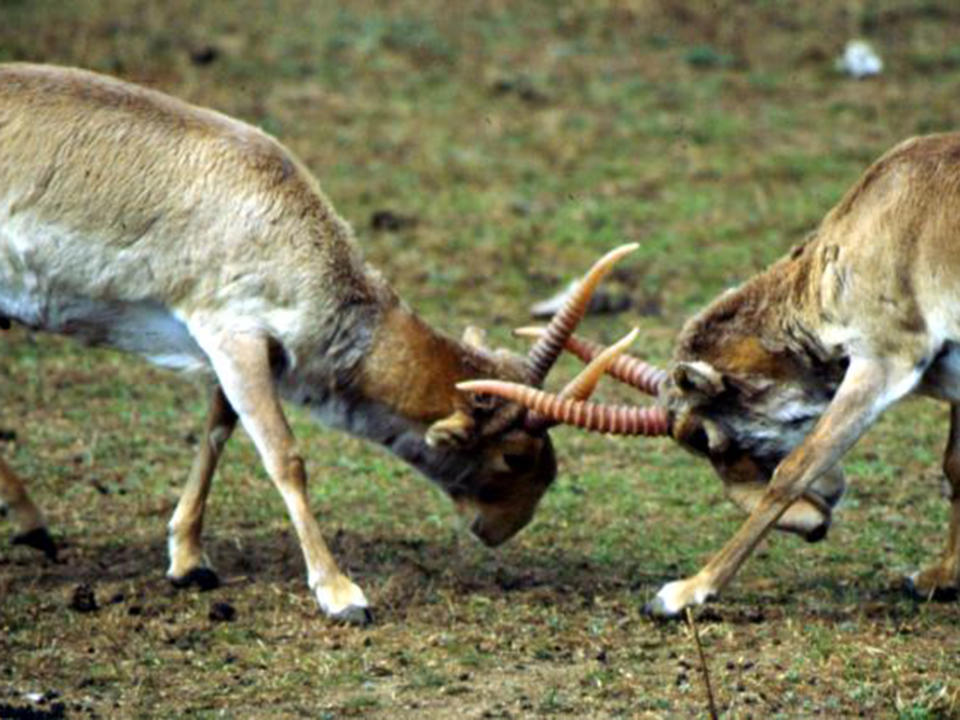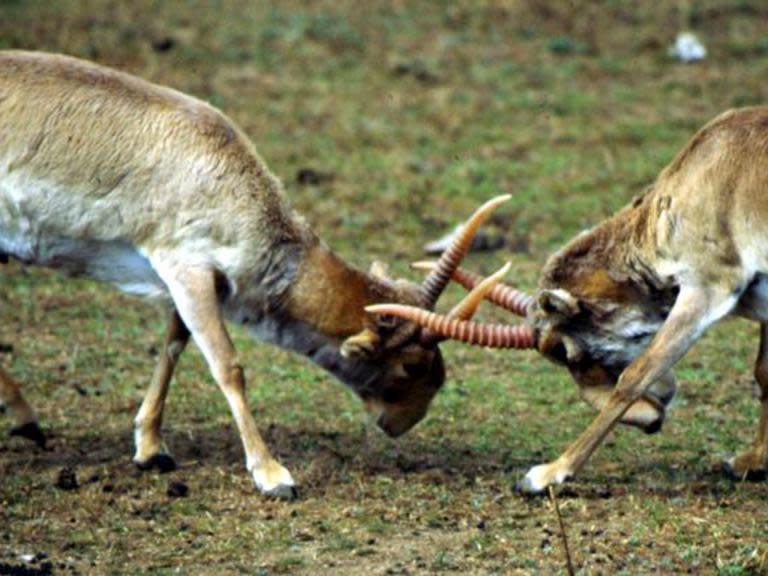Mystery sudden death of 200,000 antelopes solved by scientists
The mystery of why more than half the world's population of saiga antelopes suddenly died two years ago has finally been solved, researchers said.
In just three weeks, more than 200,000 healthy creatures died in Kazakhstan, wiping out more than 80 per cent of the local population, which itself counted for more than 60 per cent of the global population.
The phenomenon was captured by the film crew of Planet Earth II and broadcast as an episode in 2016.
It had been established that the animals all died of haemorrhagic septicaemia, caused by a bacteria called pasteurella multocida.
It was believed the pathogen was living harmlessly in the tonsils of the saiga antelope, so scientists were left stumped as to what caused the loss of life.
But a research team led by The Royal Veterinary College at the University of London discovered the bacteria was one of the factors that contributed to their destruction.
They found that increased humidity and raised air temperatures in the days before the deaths, triggered a bacterial invasion of the blood steam. This in turn led to septicaemia.
By uncovering patterns in previous die-offs among saiga antelope populations, they found that the probability of mortality of herds on that scale increases when the weather is humid and warm, such as in 2015, and twice during the 1980s.
They also found that these large mass mortalities were unprecedented in other large mammal species and tending to occur during calving.
The saiga antelope invests a lot in reproduction so that it can persist in such extreme conditions in the Betpak-Dala region of Kazakhstan, which is roughly the size of the British Isles.
Temperatures there plummet to below -40 Celsius in winter or rise to above 40 Celsius in summer, with food scarce and wolves prowling.
With this strategy, high levels of mortality are to be expected, but the species’ recent history suggests that die-offs are occurring more frequently, potentially making the species more vulnerable to extinction.
A combination of virus infection, high levels of poaching, destruction of habitat and events like the one in Kazakhstan could reduce numbers of the saiga antelope to a level where they are not able to recover.
“The recent die-offs among saiga populations are unprecedented in large terrestrial mammals," said Richard Kock, professor in emerging diseases and lead researcher at the Royal Veterinary College.
"The 2015 mass mortality event provided the first opportunity for in-depth study, and a multidisciplinary approach has enabled great advances to be made.
"The use of data from vets, biologists, botanists, ecologists and laboratory scientists is helping improve our understanding of the risk factors leading to MMEs – which was beneficial when another MME occurred, this time in Mongolia in 2017.
"Improved knowledge of disease in saigas, in the context of climate change, livestock interactions and landscape changes, is vital to planning conservation measures for the species’ long-term survival."

 Yahoo News
Yahoo News 

